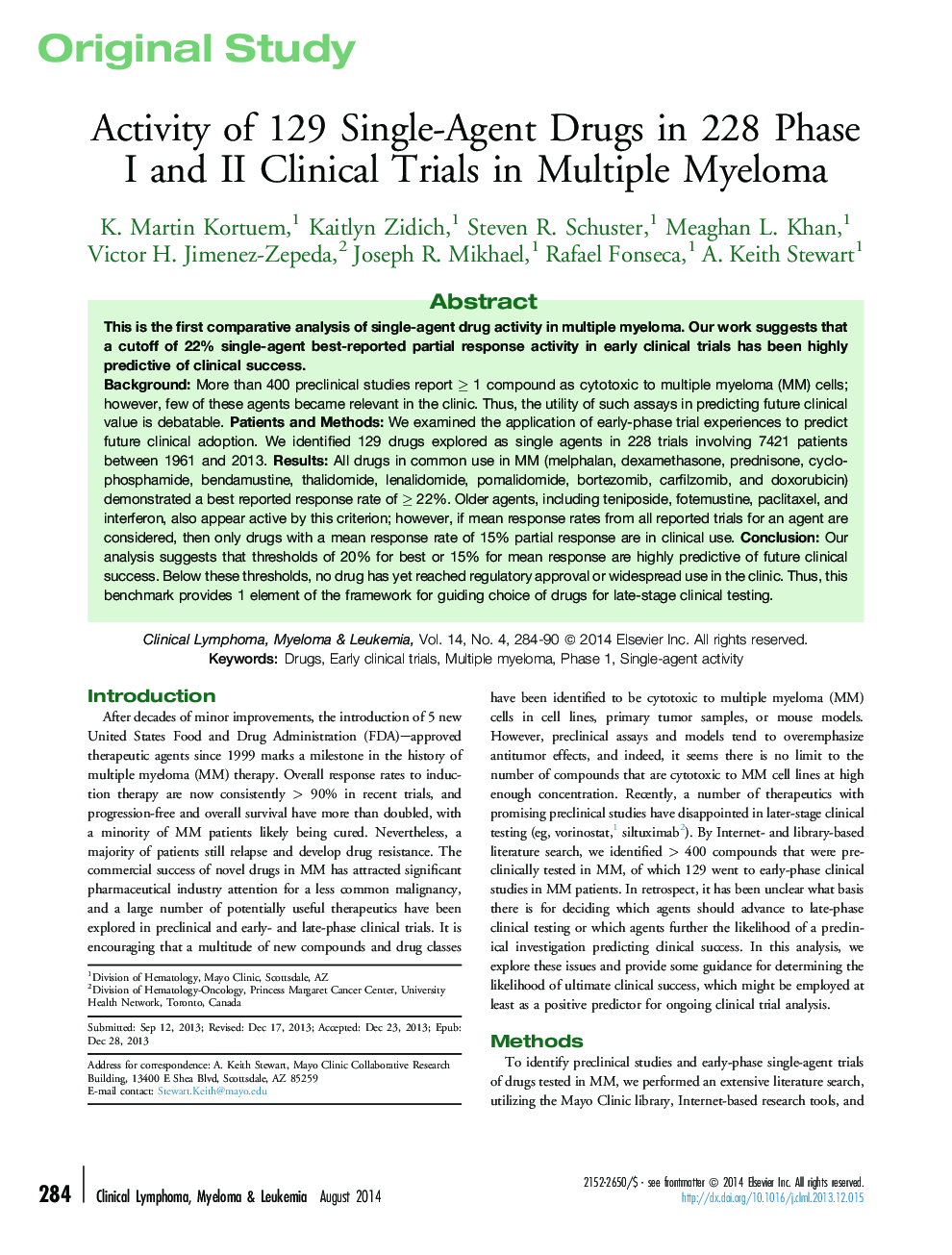| Article ID | Journal | Published Year | Pages | File Type |
|---|---|---|---|---|
| 5882882 | Clinical Lymphoma Myeloma and Leukemia | 2014 | 12 Pages |
BackgroundMore than 400 preclinical studies report ⥠1 compound as cytotoxic to multiple myeloma (MM) cells; however, few of these agents became relevant in the clinic. Thus, the utility of such assays in predicting future clinical value is debatable.Patients and MethodsWe examined the application of early-phase trial experiences to predict future clinical adoption. We identified 129 drugs explored as single agents in 228 trials involving 7421 patients between 1961 and 2013.ResultsAll drugs in common use in MM (melphalan, dexamethasone, prednisone, cyclophosphamide, bendamustine, thalidomide, lenalidomide, pomalidomide, bortezomib, carfilzomib, and doxorubicin) demonstrated a best reported response rate of ⥠22%. Older agents, including teniposide, fotemustine, paclitaxel, and interferon, also appear active by this criterion; however, if mean response rates from all reported trials for an agent are considered, then only drugs with a mean response rate of 15% partial response are in clinical use.ConclusionOur analysis suggests that thresholds of 20% for best or 15% for mean response are highly predictive of future clinical success. Below these thresholds, no drug has yet reached regulatory approval or widespread use in the clinic. Thus, this benchmark provides 1 element of the framework for guiding choice of drugs for late-stage clinical testing.
